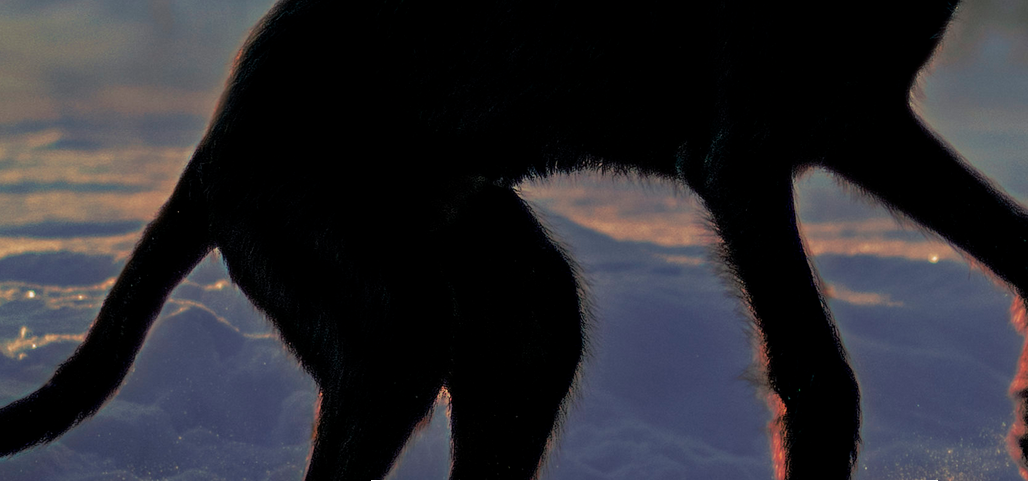Exhibition: Bonnie Baxter | Spirit Matter - Opening January 10 at Centre Clark
 Image courtesy of the artist.
Image courtesy of the artist.
BONNIE BAXTER : Spirit Matter
EXHIBITION /
JANUARY 10 TO FEBRUARY 15, 2020
OPENING /
FRIDAY, JANUARY 10, 8PM
ARTIST TALK /
SATURDAY, JANUARY 25, 3PM
Centre Clark
5455, Avenue De Gaspé, Suite 114
www.clarkplaza.org
A flywheel of dualities —Spirit/Matter - Body/Soul - Breath/Death—Bonnie Baxter’s Spirit Matter asks you to pause for a sensory-based proposal. Divergent mediums and technologies tug at our primal responses: a looming rat/man figure flooded with de-naturing light pushes against a wall—pricking at our phobias like the smell of a hospital. Passage through a small portal brings you to a 360° continuum of great loping wolfhounds—embodiments of body, coursing in endless circles. Their desire for life is like ouroboros: inevitable, compelling, frightening, joyous. Above, chimeric angels hover—an aurora of synapses firing. Together the elements form both an intoxicating diorama of Gaia and an artist’s rendering of the cerebrum.
Baxter has featured her companion wolfhounds as icons and transformative figures in most of her para-autobiographical series. Their short life cycles, from birth to death, have enacted the “eternal return” in her cyclical re-formations. In Spirit Matter they enact this infinite circle of existence.
“Convergent evidence indicates that non-human animals have the neuroanatomical, neurochemical, and neurophysiological substrates of conscious states along with the capacity to exhibit intentional behaviours.”
- The Cambridge Declaration on Consciousness (July 7, 2012)
Our capacity for empathy is not unique and, by extension, neither is the indefinable quality we refer to as “spirit.” We turned “human” into an adjective that bestows almost limitless value and consequently devalues all others by definition. It was used to justify colonialism, slavery, servitude and sexism, and continues to serve as the justification for our abuse and neglect of our fellow creatures and, consequently, the planet itself. This exhibition feels like a eulogy and a challenge to our self-designation as “sapiens.”
As a society we are becoming disconnected from others, our heads in the clouds. Baxter’s art has always been good at asking questions, giving us space to hear our own thoughts. Images, layered thick, provide many points of access, many possible meanings. It’s your journey she’s concerned with, as much as her own. This installation wraps around you, lets you enter a perspective grounded in physical reality—fur, sinew, muscle and grass—while giving you access to something transcendent. We’ve been inducing spiritual experiences to expand our understanding of ourselves and our place within the universe for as long as we’ve been drawing pictures. We’ve been doing it because “spirit” matters. It is what keeps us responsible to ourselves and others. Baxter raises her voice in a growing chorus of artist/climate-activists striving to awaken a response to the sublimated and crippling fears of the climate crisis. Through divergent narrative strains she creates a mythic landscape, an immersive, experiential continuation of her dystopian RatKind series, a singular vision giving shape to the experience of belief: faith that life, all kinds of life, have meaning in themselves.
- Christine Unger
BIO
Bonnie Baxter’s recent work is instilled with the spirit of social ecology and realized through experimental print, installation, sculpture, and video. Her continuing series, RatKind, uses inter-species awareness to engage viewers consciousness of the environment, social and ecological. Exhibitions include The Tragic and Premature Death of Jane at Division Gallery in 2016, as well as three major surveys of her work at the Musée d'art contemporain des Laurentides (MAC LAU) including the touring exhibition Rewind (2005-07) and Bonnie Baxter : Présent / Passé / Futur (2018-19). She was born in Texarkana, Texas and lives and works in Val-David, Québec where she founded the Atelier du Scarabée in 1982. Her work has been exhibited both nationally and internationally for more than 4 decades.
